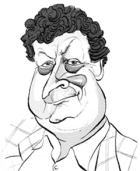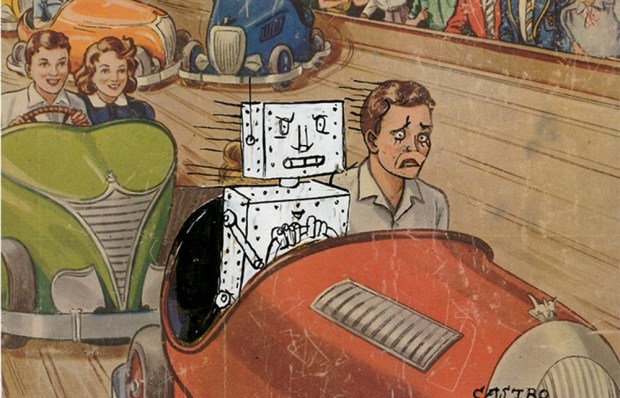Are you sitting comfortably and wearing your tinfoil hat? If so, open YouTube and watch a full-screen version of the Zapruder film, in particular the section after frame 215 where the presidential limousine passes behind the Stemmons Freeway sign. What you will see, partly obscured by the sign, is a man’s opened umbrella 30 feet from the presidential car when the first shot is fired. Yet it hadn’t rained in Dallas since early morning; Dealey Plaza was bathed in sunshine.
As you can imagine, many conspiracy theories formed around ‘Umbrella Man’ — who also appears in still photographs of the scene. Some theorised that the umbrella canopy concealed a gun or paralysing dart; others maintained the bearer of the umbrella, in league with a ‘dark-complexioned man’, possibly Cuban, formed part of a sniper team signalling that a second shot was needed.
Only in 1975 did Louis Witt go public when he explained his actions to the Warren Commission. He was holding his umbrella as a protest to annoy the president — it was a Neville Chamberlain symbol, a dig at Kennedy senior’s appeasement.
Umbrella Man fascinated John Updike. For him it suggested there was a kind of ‘quantum level’ to historical events. When you go beneath the surface of the ‘sense-making’ narrative and focus intently on ever smaller details, you begin to uncover things that make no sense, a hodgepodge of coincidences and actions that defy conventional explanation. (Had anyone suggested beforehand that Umbrella Man was a surrealist protester, they would have been ridiculed.)
This quantum level of weirdness will always emerge when 20,000 obsessives focus on the same 15 seconds of film. It is also a characteristic of criminal investigations, where no detail is too small to ignore: every true-life crime book I have read includes a coincidence or absurdity which would never be allowed in fiction. I mean, why the hell did Dennis Nilsen move to a top-floor flat? That estate agent must have been a genius.
As a fabulous case study in how the complex reality differs from the simple narrative, I recommend reading Bad Show by Bob Woffinden and James Plaskett. The book argues that Major Charles Ingram was entirely innocent of cheating in the famous coughing episode of Who Wants to Be a Millionaire? Am I convinced? Not fully, not yet. But nor do I think they are mad. The lesson of Umbrella Man is that the truth is often very strange.
So I had always believed it damning that the major’s wife was in telephone contact with a fellow contestant — but did not realise before reading the book that there was a whole community of semi-professional game-show contestants (Diana Ingram and Tecwen Whittock among them) who had learned how to game ITV’s selection process. Such people might spend £600 on premium-rate phone calls in to be selected, so it made sense for them to confer on strategy. Many contestants came from a tiny clique of fanatics, so knowing other contestants was fairly normal. I agree, of course, that the coughs sound suspicious, at least when selectively amplified: what I want to know is whether you can edit other winning runs from the show to obtain the same effect. If so, either everyone is cheating or the case against the major is weaker.
I also suspect there are many people on a jury (and working in television) who simply can’t believe there are people who know that Holbein painted ‘The Ambassadors’ and that a Homburg is known as an ‘Anthony Eden’ but can’t name an album by Craig David. Yet I suspect the same is true of most people reading this magazine. I certainly hope so.
Got something to add? Join the discussion and comment below.
Get 10 issues for just $10
Subscribe to The Spectator Australia today for the next 10 magazine issues, plus full online access, for just $10.















Comments
Don't miss out
Join the conversation with other Spectator Australia readers. Subscribe to leave a comment.
SUBSCRIBEAlready a subscriber? Log in